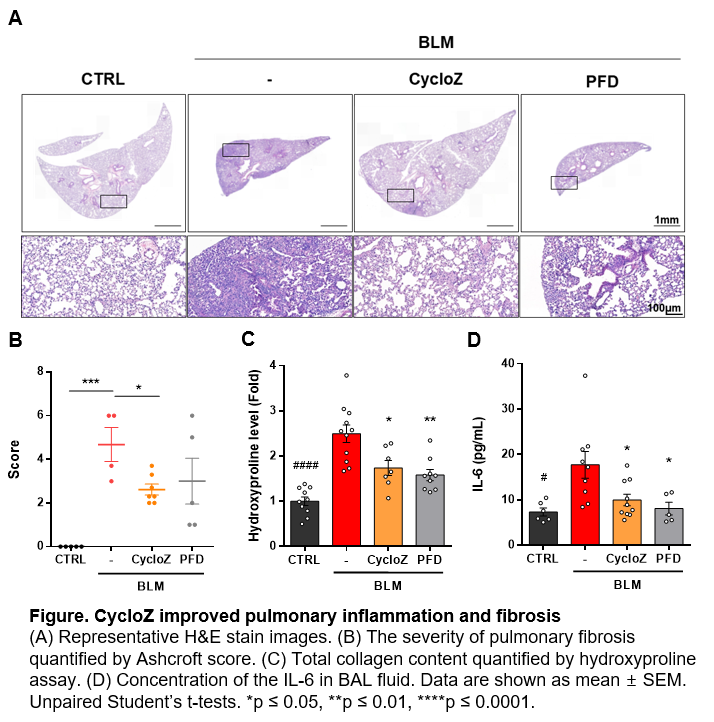Abstract
Aims: Our study demonstrated the therapeutic effects of CycloZ on pulmonary inflammation using bleomycin (BLM)-induced pulmonary fibrosis mouse model.
Methods: ICR mice were intravenously injected BLM at a 75 mg/kg dose and orally administered either CycloZ (15 mg/kg/day) or pirfenidone (300 mg/kg/day) for 28 days. Lung function and micro-CT imaging analyses were conducted before sacrifice, and lung tissue samples were analyzed for molecular features.
Results: The administration of CycloZ resulted in improved lung compliance, total elastance, and tissue elastance, as well as increased aeration area of the lung. Additionally, it led to the recovery of molecular fibrotic features, including excessive inflammatory cytokines, extracellular matrix, and mesenchymal markers. CycloZ also ameliorated immune cell infiltration. RNA-sequencing analysis revealed that CycloZ treatment reversed gene expression patterns associated with inflammation and translation.
Conclusions: The results of our study suggest that CycloZ may serve as a novel drug for IPF. It was observed to reverse the expression of multiple genes affected by the fibrotic agent BLM, indicating its potential therapeutic benefits.
